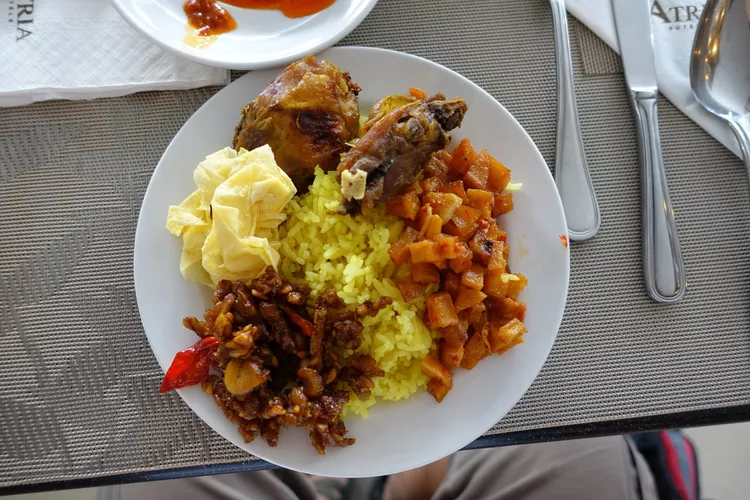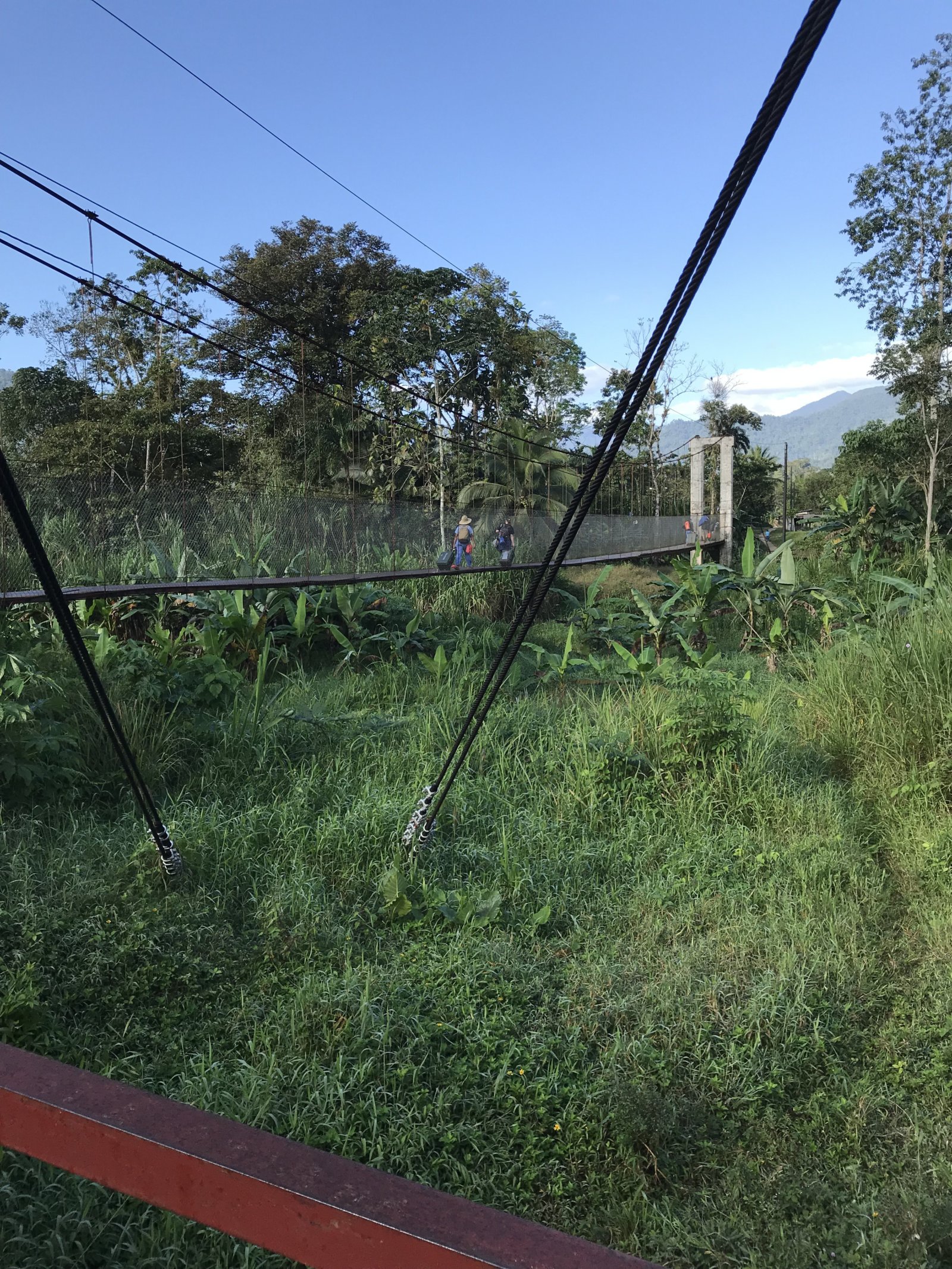1. Varied Traditions Yield an Equally Varied Menu of Dishes
Fact checked by
Patrice Williams
Indonesia is the largest economy in Southeast Asia. Its 13,000 islands are the collective home to a nation comprising over 250 million people belonging to a multitude of languages and ethnic groups – is it any surprise that Indonesia’s food is as diverse as its geography? The rich waters between Indonesia’s islands provide seafood in abundance, and the equatorial climate provides the perfect weather for growing rice, soybeans, and spices.
The nation’s culinary traditions also draw their origins from its patchwork history. Indonesia’s first civilizations – chief among them the Javanese – originated their own cooking and dining, later taking in influences from Chinese and Indian traders. Europeans in search of expensive native spices such as nutmeg and cloves later brought new ways of cooking along with their colonization of the East Indies.
2. Where to Eat Out in Indonesia
Foodies traveling on an expansive Indonesia itinerary get to experience all those influences smashed together, with variations from place to place. Food in Yogyakarta and central Java, for example, is commonly understood to be sweeter; Padang restaurants (originating from Sumatra) favor spices and curries.
Warung, or small family-owned eateries, can be found wherever hungry Indonesians gather to eat. They’ll serve the specialties of the region, whether it’s grilled ikan parape in Makassar or the whole-roasted pig known as babi guling in Ubud, Bali.
Food in warung is commonly cooked ahead of time, then served at room temperature throughout the day to accommodate the irregular eating schedules of most people. If you’re worried about travelers’ diarrhea, avoid these standing dishes and order a la carte instead.
Padang restaurants are Indonesia’s version of the all-you-can-eat buffet. Padang restaurants in Indonesia serve food hidang-style: a large number of saucers bearing different dishes, from fried chicken to curried cow brains to beef rendang, will come to your table. Saucers will come and go, but you’ll only be charged for the dishes you eat from. (All while you’re plied with as much rice as you can eat.)
Invented in West Sumatra and named after one of the area’s most prominent cities, the Minangkabau people brought masakan Padang (Padang cuisine) to Jakarta and the rest of Southeast Asia. Kampong Glam in Singapore, for example, has a fair number of Padang restaurants ready to serve you!
Street food: Southeast Asia’s penchant for good, cheap street food spills over to Indonesia, too. Cities like Jakarta and Yogyakarta have kaki lima, or street food carts, waiting at almost every corner – you won’t have to walk far to find one of Indonesia’s top street foods! Safety is not really an issue if you choose street food carts that cook their dishes individually for each diner.
3. How to Eat Indonesian Food
With so many variations between food traditions in Indonesia, it’s hard to pin down advice that will work in almost every dining context. We’ve found the following apply in most cases (though not all):
- Side dishes: Many restaurants in Indonesia serve main meals with kerupuk, light crackers made from prawns, and a fried egg (telur). Vegans should be aware that even dishes advertised as not containing meat are commonly prepared with eggs.
- Utensils: Outside of Chinese food stalls, chopsticks are rarely used as utensils in Indonesia. More commonly, meals are eaten with a spoon in the right hand and a fork in the left. Restaurants away from tourist areas and signed simply as Rumah Makan (eating house) may expect you to eat with your hands, as many locals do. Begin by dipping only your right hand in the bowl of water with lime found on the table and keep your left hand – associated with toilet functions – in your lap to be polite.
- Condiments: Chili condiments known as sambal are provided in small dishes or bottles so that you can spice your own food to taste. Some sambal is made from fermented shrimp or fish; smell it first if you are not sure!
- Precautions: Peanut oil is the most common oil used to stir-fry food in Indonesia. People that are allergic should specify “saya tidak mau kacang tanah” – translated “I do not want peanut”.
4. What to Eat in Indonesia
- Tumpeng: Acclaimed as Indonesia’s national dish, tumpeng is a series of grilled and stewed foods arranged around a tall cone-shaped mound of turmeric-stained rice. The tumpeng used to be brought out only during Indonesian festivals – today, they’re common dishes served at traditional Indonesian restaurants, sometimes brought out as an Indonesian version of a birthday cake.
- Nasi Goreng: Like most of its neighbors, Indonesia’s main staple is rice – served either plain or fried with spices. No traveler can pass through Indonesia without eating their weight in nasi goreng, Indonesia’s tasty version of fried rice. This popular, low-cost dish is eaten by Indonesians regularly for dinner and sometimes even breakfast. Garlic, shallot, tamarind, and chili lend nasi goreng its delicious flavor.
- Gado-Gado: A great choice for vegetarians, gado-gado actually means “hodgepodge”. Gado-gado usually consists of stir-fried vegetables coated with a thick peanut sauce for protein.
- Satay: Skewered meat grilled over glowing charcoal, Satay is one of the most common smells encountered while walking the streets in Indonesia. Commonly made from chicken, beef, goat, pork, or anything else that can be grilled on a stick, satay can serve as a quick snack or a main meal depending on the number of small skewers purchased. Satay is usually served with peanut sauce or sambal.
- Tempeh: Tempeh is made by compressing fermented soybeans into a cake that is roasted or fried. The firm texture and delicious ability to go well with nearly any dish make tempeh the perfect meat substitute, and its fame has already spread to the West.
- Ayam Goreng: Fried chicken is comfort food for all parts of the world. Ayam goreng typically consists of one or two pieces of chicken that are fried to a crispy brown and served on rice.





